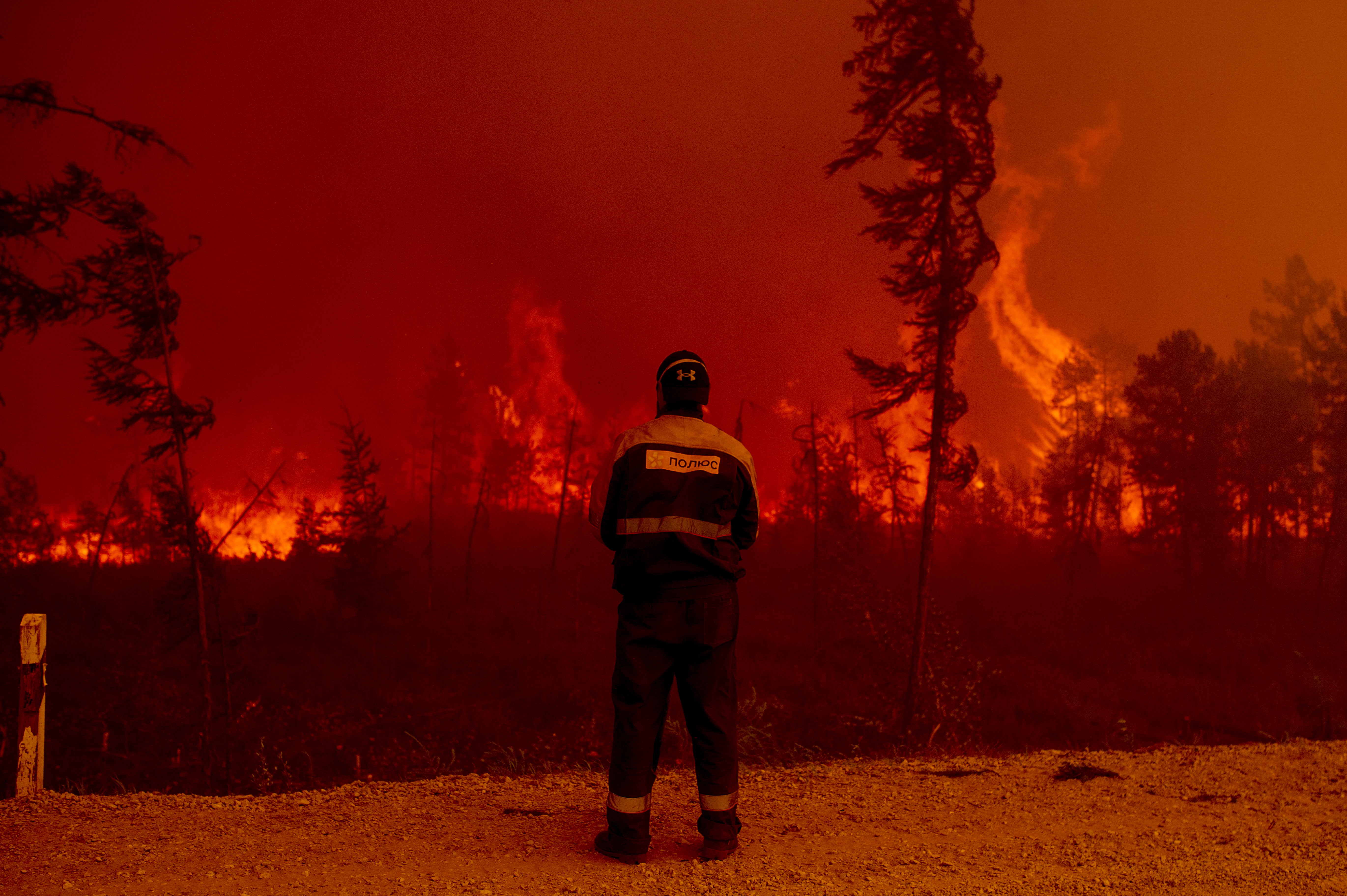
Carbon emissions from wildfires broke records around the world this summer, according to the European Union’s Copernicus Atmosphere Monitoring Service.
Parts of Siberia produced their highest fire-related emissions since the agency first began keeping tabs in 2003. Ditto for the western United States.
Altogether, wildfires worldwide spewed about 1.76 billion metric tons of carbon into the atmosphere.
That’s not the highest on record, globally speaking. But it’s still a staggering amount.
Comparatively, the entire world emitted around 10 billion metric tons of carbon this year (that’s the equivalent of about 36 billion tons of carbon dioxide) through the burning of fossil fuels (Climatewire, Nov. 4).
Summer emissions, on the other hand, did break global records.
Copernicus reported earlier this year that July and August emissions were the highest since the dataset began in 2003. July saw about 343 million metric tons of carbon produced by wildfires, with nearly half of the emissions coming from North America and Siberia alone. August was even worse, producing about 378 million tons.
It’s a testament to the influence of climate change around the world, scientists say.
“Drier and hotter regional conditions under a changing climate have increased the risk of flammability and fire risk of vegetation,” said Copernicus scientist Mark Parrington in a statement.
Scientists expect wildfires to worsen as the climate continues to warm. The carbon they pour back into the atmosphere could, in turn, further accelerate the rate of global warming.
Copernicus uses satellites to track wildfires burning across the globe. By observing the intensity of the blazes, the agency is able to estimate the amount of carbon they’re pouring into the air.
Western North America, Siberia, the Mediterranean, and parts of India and Pakistan this year were among the hardest hit regions of the world.
The republic of Sakha in northeastern Siberia saw its highest summertime emissions since 2003. Parts of western Siberia, including Omsk and Tyumen, also saw well above-average emissions.
Western North America also produced its highest summertime emissions since the record began. Between Canada and the western United States, the blazes emitted about 89 million metric tons of carbon into the atmosphere.
California fires alone produced more than 20 million tons of carbon during the summer months, a record of its own.
During the fall, the Dixie Fire—which burned nearly a million acres before it was finally contained at the end of October—became the second-largest wildfire in state history and the largest to originate as a single blaze. The August Complex Fire, which burned more than a million acres last year, originated as several dozen individual wildfires that eventually converged on one another.
Across the ocean, Turkey experienced some of its most intense blazes on record this summer, amid a scorching heat wave that swept the Mediterranean. Greece, Italy, Albania and other neighboring countries also were affected by intense wildfires.
And parts of the Indian subcontinent also suffered from severe wildfires this year.
The Indian states of Punjab and Haryana experienced one of their most active years ever. Between September and November, Punjab saw its highest fall fire emissions on record.
Emissions from wildfires are bad for the climate—but they’re also bad for human health, causing air quality to decline. Scientists estimate that air pollution produced by fires across the Indo-Gangetic Plain affected millions of people.
These pollution plumes don’t always stay in one place. They can cause health hazards thousands of miles away. The blazes in western North America this year produced plumes of smoke that drifted all the way to the East Coast, crossed the ocean and eventually hit parts of Europe.
Between the human health impacts of drifting smoke plumes and the climate impacts of their carbon emissions, wildfires have become a global hazard—even in places they’re not actively burning.
The Copernicus report comes as the Northern Hemisphere’s fire season draws to a close. In the Southern Hemisphere, on the other hand, the summer wildfire season is just kicking off. In recent years, wildfires in places such as Australia and the Amazon rainforest have also been among the worst in recorded history.
“It is clear from 2021 that climate change is providing the ideal environments for wildfires, which can also be exacerbated by local weather conditions,” Parrington said. “As the fire season gets underway in the Southern Hemisphere, we will be keeping a close watch on developments.”
Reprinted from E&E News with permission from POLITICO, LLC. Copyright 2021. E&E News provides essential news for energy and environment professionals.
